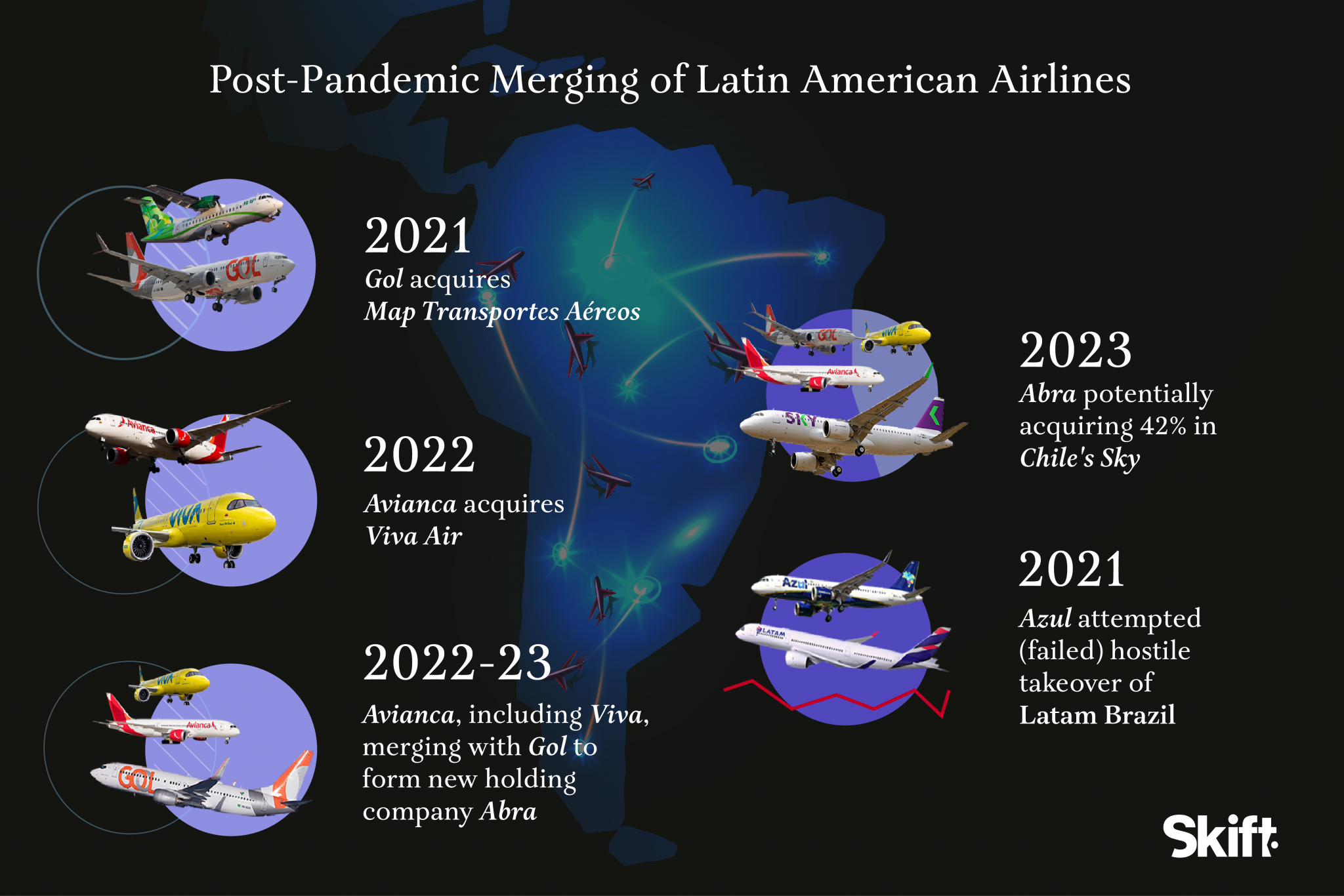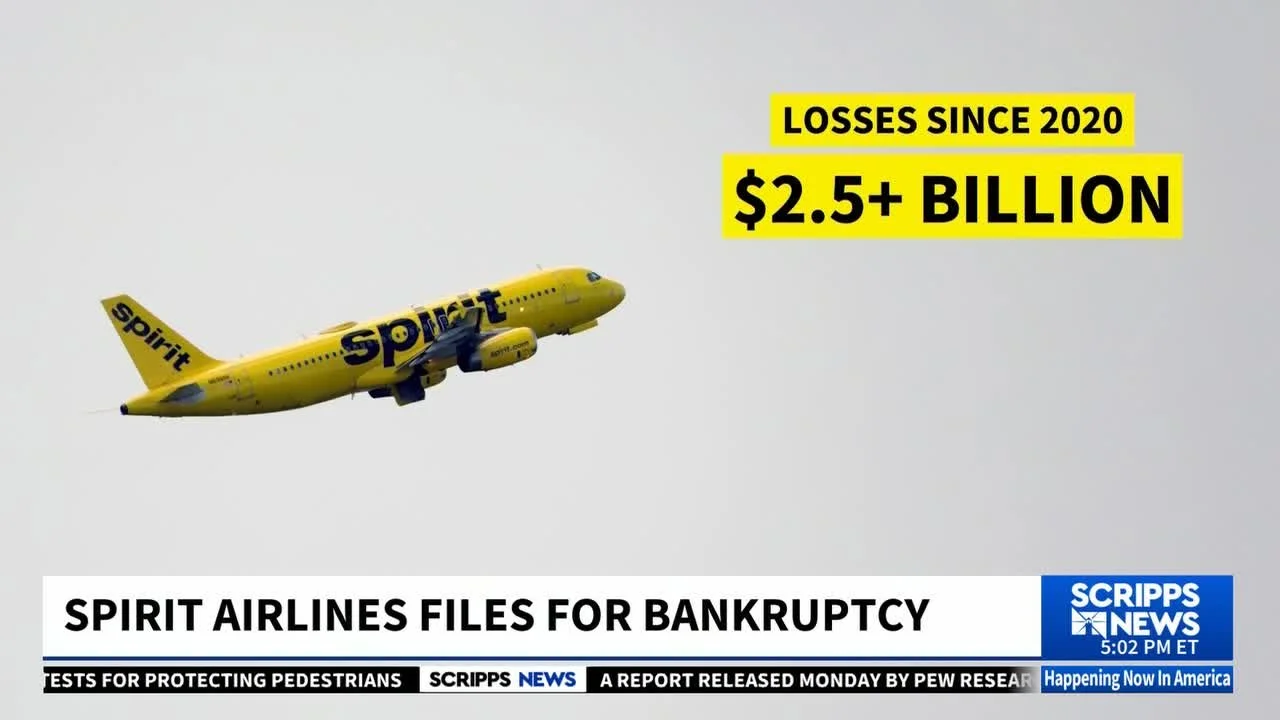The Trust Grab - The Consolidation Within Transportation & Logistics
Rates are high, supply chains are twitchy, and customers have 0 patience for excuses.
The merger drumbeat you’re hearing is a scramble for proof: proof that networks hold under stress, custody is clean, and promised arrival times actually happen. Operators that can show receipts on reliability, compliance, and uptime are quietly setting the rules for everyone else. This blog digs into why that shift is accelerating now and where the next wave of winners will come from.
Commercial Aviation: Bankruptcy and Restructuring Pressure
Latin America wrote the early chapter. Avianca and LATAM did not tiptoe through Chapter 11. They used it to cut real debt, simplify fleets, and re-emerge with liquidity to choose profit over vanity. That is the blueprint for a market where shocks last longer than a quarter. If you do not reset the balance sheet and the operating model together, the cycle will do it for you.
The Collapse Of Spirit
Spirit filed for Chapter 11 on November 18, 2024. Bondholders provided a $300 million debtor-in-possession (DIP) facility to bridge operations while the company negotiated with lessors and vendors. Spirit then emerged in March 2025, but the cash cushion and the quick legal win did not solve the core economics. The JetBlue deal had already been blocked by a federal judge in 2024, and the parties formally terminated the merger two months later, with JetBlue paying Spirit $69 million. The clean exit ramp was gone before the 1st case truly finished.
On August 29, 2025 Spirit filed again. In the weeks around the 2nd filing, management disclosed a 2nd DIP package of up to $475 million, with $200 million available immediately once the court approved it. Reuters put a number on the operating pain in the run-up to that filing: a Q2 net loss near $246 million and costs equal to about 118% of revenue, alongside an exhausted $275 million revolver. Those are not normal bad-quarter numbers; those are a business model that does not clear the new hurdle rate.
The AerCap settlement, approved October 10, 2025, shows how deep the reset has to go. Spirit will reject 27 existing leases and give up rights to 36 undelivered A320neo jets. AerCap keeps $9.7 million of deposits and can file an unsecured claim up to $572 million. AerCap also injects $150 million in cash and agrees to lease 30 new Airbus aircraft to Spirit for deliveries from 2027–2029. The company has already asked the court to let it reject 87 additional aircraft leases, and management is planning a fleet cut that takes the active fleet from around 214 aircraft toward roughly 114. That is a complete resizing, not a trim.
Engines made the operating side worse, and you cannot spreadsheet your way out of grounded metal. Pratt & Whitney geared turbofan inspections kept a significant slice of Spirit’s A320neo fleet on the ground, with media tallies in mid-2025 citing about 39 grounded frames. Spirit said it had received more than $150 million in credits tied to aircraft-on-ground days through late 2024, which helps liquidity but does not put an airplane back on the line tomorrow morning. When your product is time, compensation is not the same as completion.
The ULCC is not dead. It is maturing. Frontier leaned into perceived value and loyalty economics and told customers what they want to hear in 2025: cheap but not joyless. The company announced UpFront Plus and even first-class seats for late 2025, plus loyalty tweaks that make the fee ladder feel less punitive. That is not a costume change. It is an admission that after a pandemic and too many meltdowns, passengers want affordable that feels fair and dependable.
If your business model cannot carry the balance sheet through engine surprises, delivery delays, and a tougher DOJ, you will be re-sized to something that can. Harsh, yes. Also clarifying.
Freight, the transition from volume to validation
Shifting from commerical airlines to freights, one recent transaction says it clearly: UPS’s $1.6 billion acquisition of Andlauer Healthcare Group, announced in April 2025. The deal strengthened UPS’s healthcare logistics platform by adding 9 distribution centers and 22 branches across Canada, expanding temperature-controlled and last-mile capabilities across North America. For UPS, this was a strategic pivot toward high-margin, specialized logistics—segments more insulated from macro shocks and tariff volatility than traditional parcel delivery. For Andlauer, integration into a global operator provided capital support and digital infrastructure to scale faster. I find this compelling because it shows large carriers repositioning from volume-driven models toward specialized, service-intensive niches like pharma and medical logistics, where reliability and compliance are the key differentiators.
Logistics, Compliance As Moat And Density As Engine
On the logistics side, J.F. Lehman & Company acquired Atomic Transport in February 2025, with Houlihan Lokey as sell side advisor. Atomic adds bulk hauling and transfer station management across 19 states and 30 terminals, strengthening route density and contracted revenue. For the PE firm, it increases exposure to regulated infrastructure with high service standards and predictable demand. In terms of Atomic, sponsor backing supports fleet growth, safety and tracking upgrades, and pursuit of municipal and industrial contracts. The takeaway is simple: operators are moving from broad, volume driven freight to specialized, service intensive logistics where reliability, safety, and regulatory precision decide who wins.
T&L Global M&A Transaction Volume from Houlihan Lokey’s T&L 2025 Q2 Market Update
The Bipolar Future
I think it will likely be a dual effect on T&L M&A. In the near term, tariffs, inflation, and policy uncertainty are dampening deal volume and pressuring pricing, while engines, labor, and delivery delays keep operators cautious. Over time, those same pressures are forcing the sector to specialize, tilting investment toward healthcare logistics, temperature controlled freight, regulated industrial flows, and nearshoring corridors that tighten links between the United States, Mexico, and Canada.
The result is fewer transactions but more strategic ones, with emphasis on capability over capacity and on networks that can prove reliability with data. That shifts the banker’s job from auctioneer to architect. The work is mapping ecosystems, stitching together carve outs, joint ventures, and asset trades, and underwriting integration plans that unify compliance, telemetry, and service level guarantees without breaking the operation. In this market, advice compounds, so the best outcomes come from bankers who stay in the loop beyond signing and help clients adapt as the landscape hardens.




